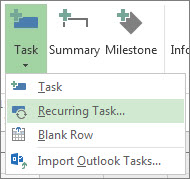

Recurring appointment attachment synchronization is not supported. When you disable attachment synchronization, the attachments will not appear in appointments in Dynamics 365 but will remain in Dynamics 365 for Outlook appointments. To enable:Ĭhoose System Settings, then choose Synchronization.Ĭhoose Synchronize appointment attachments with Outlook or Exchange By default, appointment attachment synchronization is disabled. to the appointments they create in the Dynamics 365 web application or Dynamics 365 for Outlook. Users can attach documents, pictures, recordings, etc. More information: Integrate your email system This section applies to message synchronization done through Microsoft Dynamics 365 for Outlook or server-side synchronization. This topic covers the highlighted settings below.Įnable appointment attachment synchronization with Outlook or Exchange Users should have the latest Dynamics 365 for Outlook installed. Dynamics 365 admins can enable synchronization using Settings > Administration > System Settings > Synchronization. Photo by Ambitious Creative Co.By default, some synchronization between Dynamics 365 and Outlook for Dynamics 365 is disabled so organizations can control what gets synced according to their business requirements. The above approach could be expanded to handle different types of frequencies (monthly, semi-annually, etc).īut should it be done? Personally, I am not a fan of recurring tasks, and the standard warnings about over-use of wait conditions applies. Update task schedule “next scheduled” with the due date from the task created in step 3.


If so, create task setting due date to 1 week from next scheduled date and mapping the fields from the task schedule record.Check condition is workflow execution time less than end date.Wait condition timeout 1 minute after next scheduled.Create a workflow that runs on create of task schedule and on update of the next scheduled date:.Populate next scheduled with the first task instance due date, and end date with when the series should end. Create an entity called “Task Schedule.” Include the relevant fields like owner/assigned to, next scheduled, subject, description, end date.Here is one approach to creating a weekly recurring task: While Dynamics 365 does not include an official “recurring” task like it does with appointments, it can still be done. How can I do recurring tasks in Dynamics 365?


 0 kommentar(er)
0 kommentar(er)
